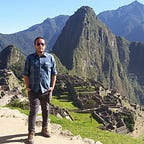World Natural Heritage: Management and Approach
The World Natural Heritage (WNH) status is normally seen as an international label that provides worldwide prestige. This prestige brings along different implications and effects depending on the conditions of each specific site. However, authorities in charge of these sites have also key influence on how these contexts are developed. Therefore, the approach that authorities have in terms of management and conservation becomes central to this issue.
As part of UNESCO’s criteria to select WNH sites, an interesting strategy has been developed during the 1990’s. This strategy aims to inscribe new natural places that are more representative of earth’s ecosystems (Anthamatten and Hazen, 2007). Thus, places that hold outstanding natural features or represent a specific type of ecosystem, become particularly relevant.
These two aspects, how a site is managed and its importance as a representation of specific ecosystems, are key elements to understand how to build an integrated approach on developing WNH sites. An interesting example on this approach is the case of Shiretoko World Natural Heritage in Japan.
Shiretoko is a peninsula located in the northeast area of Hokkaido, Japan (Figure 1). This area holds exuberant terrestrials and marine ecosystems in which a broad amount of terrestrial and marine species can be found. Additionally, the Shiretoko region has an important socioeconomic relevance for Japan, since it is home to important fisheries. This is the region’s main industry, and a co-management framework has been implement to control the use of natural resources (Makino, Matsuda and Sakurai, 2009). Shiretoko is an area that contains both natural and socioeconomic wealth, where authorities, communities, native people and fisheries are directly involved with its development.
“Since the nomination of the peninsula and its surrounding marine areas for UNESCO World Heritage Listing in 2004, various measures have been implemented to conserve its outstanding ecosystems. The approach was not to eliminate local fisheries from the area, but to place their activities at the core of the management scheme to sustain ecosystem structure and function.” (Makino, Matsuda and Sakurai, 2009, p. 207).
Normally, acquiring a WNH status has a notable positive impact on the management of the area in particular and the region in general (Conradin, Engesser and Wiesmann, 2015). In this case, authorities in charge of the Shiretoko area came together with the community and the fisheries in order to establish a cooperative and integral management plan that would bring benefits to all sectors involved. A plan in which the socioeconomic activities of the area (such as tourism and fishing) can be carried out under proper control procedures and measurements (Makino, Matsuda and Sakurai, 2009). All of this while still keeping a main and common priority for all the sectors involved: the conservation and protection of the ecosystems in Shiretoko and all their natural wealth.
While it is true that the Shiretoko case can still be improved as an integrated management plan, certainly it is a positive example of an effort to build an inclusive and integral approach to WNH sites and sustainable development of the region. The most important aspect that must be learned from this type of cases is that only through an integrated, multifunctional and inclusive approach, a proper management plan can be developed. Ultimately, this sort of approach provides a good framework to achieve sustainable development of the region in which a WNH site is located.
References
Anthamatten, P., & Hazen, H., 2007. Unnatural selection: An analysis of the ecological representativeness of natural World Heritage sites. The Professional Geographer, 59(2), 256–268.
Conradin, K., Engesser, M., & Wiesmann, U., 2015. Four decades of World Natural Heritage–how changing protected area values influence the UNESCO label. DIE ERDE–Journal of the Geographical Society of Berlin, 146(1), 34–46.
Makino, M., Matsuda, H., & Sakurai, Y., 2009. Expanding fisheries co-management to ecosystem-based management: a case in the Shiretoko World Natural Heritage area, Japan. Marine Policy, 33(2), 207–214.
http://whc.unesco.org/en/list/1193 [Accessed on February 17, 2017].
